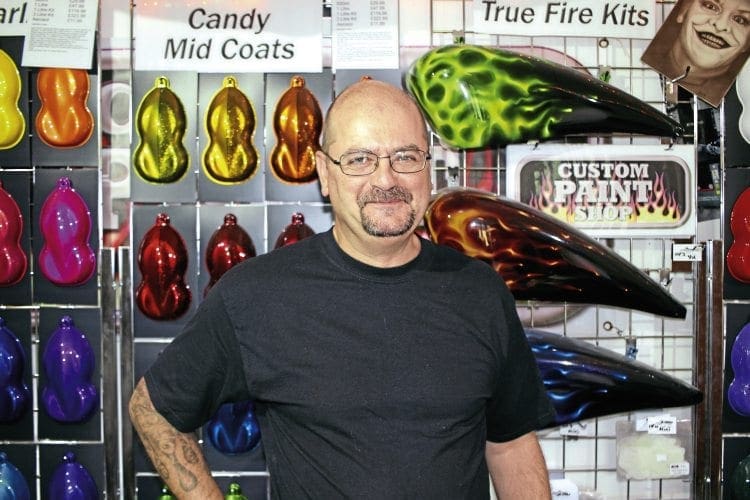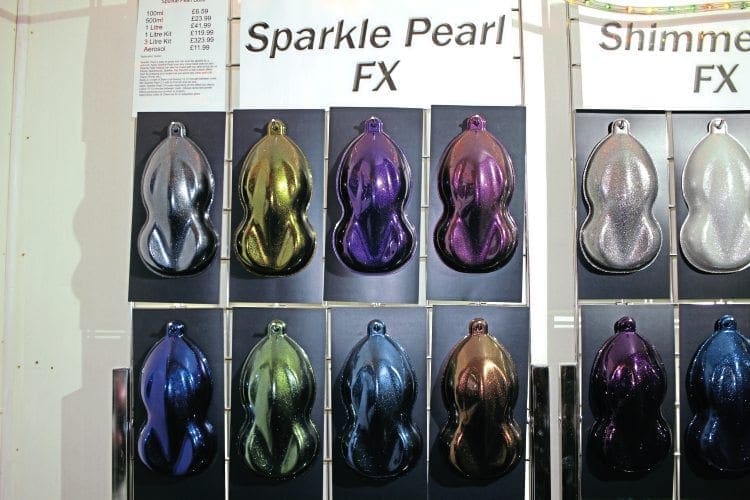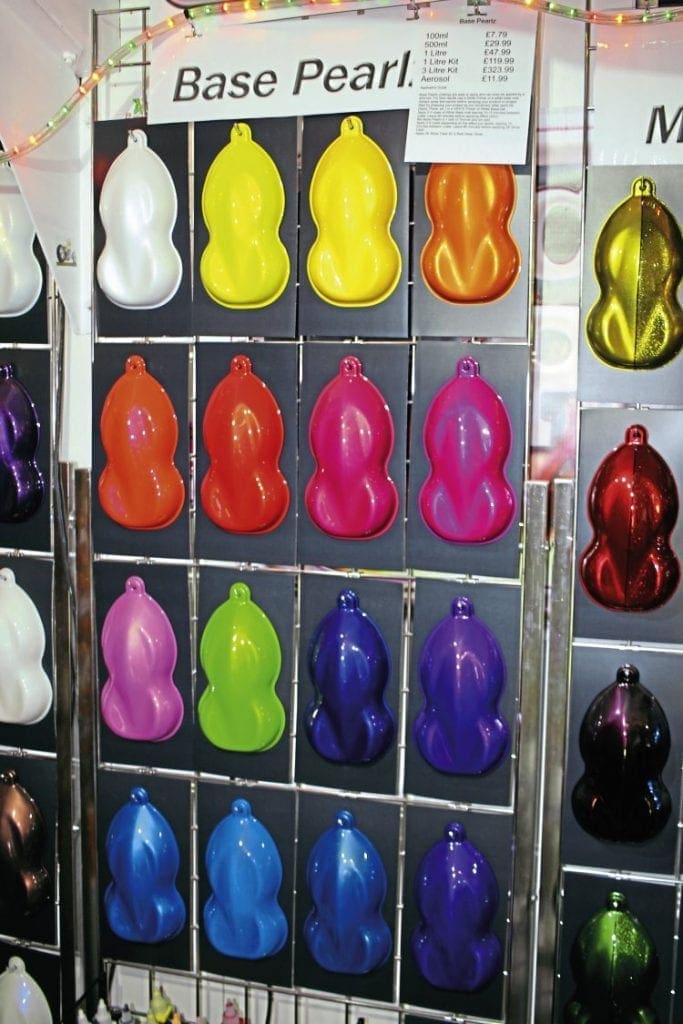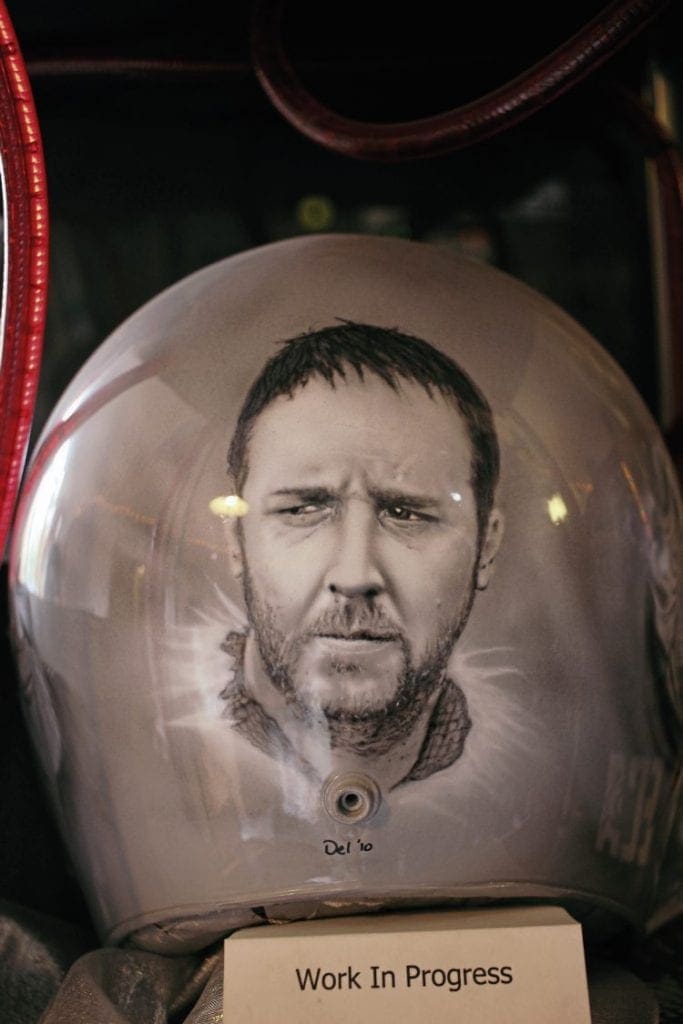Pearls & sparkle pearls
Give a scooterist a Vespa or Lambretta and chances are he’ll fit something chrome to it, tune it… or paint it (perhaps all three).
Our painting by numbers series is here to help with the latter of the trio and should provide helpful information for anyone wanting to get a paintjob done, or even have a go themselves.
For any reader who missed it, part 1 of the series started with the all-important ‘preparation and primer’ stage, part 2 followed up with colour coats and lacquer, while part 3 gave a guide to the process of multiple paint layers, striping and stencils. This month, and in the coming editions, we will take a closer look at pearl, kandy, and flake, to try and give an insight into what these individual items are all about.

Bring in the expert
This is one of those areas where I don’t think it’s enough for a journalist to simply interview a company contact and convey their interpretation of events. Pearl, kandy and flake is a very specialist field and so this is where an expert is required, which is where Del from The Custom Paint Shop steps in. Del is an accomplished airbrush artist, renowned for also teaching that trade in the classroom, and runs his company which is a supplier of the finest grade custom paints and associated paraphernalia to UK paint shops and airbrush artists. Over to Del…

Pearl overview
Pearl pigments which are used in the production of pearl paint, are manufactured from a mineral called mica, which is a natural and inorganic pigment. The mica is coated with one or more metal oxides which then result in a pigment that interacts in a specific way with light. This is called interference. The finished ‘effect’ of the pearl varies widely depending upon the thickness of the metal oxide applied and the size of the mica particles.
A wide variety of effects can be achieved from this base material, the most well-known is the ‘mother of pearl’ effect which you often see inside a shell.
Pearl paint looks almost transparent when applied over a simple white base but apply it over a black base and you get a completely different result, and I mean completely different! See the photo.

Application
Applying pearl can be challenging, but given the right knowledge and with a little care and practice, beautiful results can be achieved.

First thing is this: you must have a consistent base colour — no patches at all. The pearl is transparent so if the base colour is not 100% perfect, then you will see any and all anomalies. The most important thing though, is to be consistent with your distance (8-10in), speed, and overlap (50-75%) when applying, putting it on in consistent and light to medium coats – do not put it on wet. As you move from panel to panel always bear this in mind as any variations during this stage can be seen in the finished work. Just three or four light to medium coats should be enough to give you the pearl effect, but be aware that you won’t see the real effect until you’ve applied your clear coat.
What else?
You can achieve really interesting paint jobs when you start experimenting with different base coat colours and using a single pearl over them. Pearls are a great way of updating a proven theme, for example old English white with a pastel blue base would look good with a blue pearl over both the white and blue, keeping things traditional… but with a clean twist. The possibilities of base coat colour and pearl coat combinations are endless.

Pearls of wisdom
You will notice that we supply Base Pearlz too, these are proving very popular and are a combination of a flat pigment mix with a pearl combined normally applied over a white base providing great coverage with a subtle pearlised finish, if you want more bling, you might like to consider applying a matching or contrasting Sparkle Pearl over that — very cool.

Paint is something was can be, and should be fun, something which evokes passion. To a lot of people paint can end up being a quick afterthought, but that’s just a waste in my opinion. Well thought-out paint jobs endure the test of time. But regardless of what path you choose, just remember it’s only paint and if you drop a bollock: a) You’ve just learnt another way it shouldn’t have been done, and b) It can be removed and redone. The most important thing is you’ve enjoyed doing it and you’re happy with the end result. Till next time. Del


This article was taken from the August 2016 edition of Scootering, back issues available here: www.classicmagazines.co.uk/issue/SCO/year/2016



